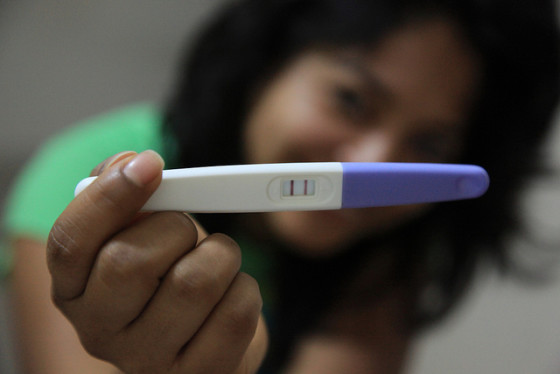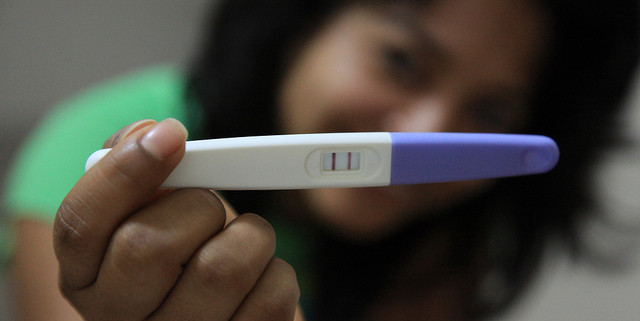In Vitro Fertilization: Everything You Want To Know

Contents
What Is IVF?
In vitro fertilization, or IVF, is a medical procedure used to help conceive a child. An IVF procedure involves removing some eggs and combining them with sperm in a petri dish or test tube in order to fertilize them. That’s where the name comes from – “in vitro” means “in glass.” It’s also the origin of the term “test tube baby.” Once an egg is fertilized, it’s then implanted into the womb by hand to grow and develop.
IVF is used when couples struggle to conceive on their own. When a couple fails to get pregnant after having carefully timed, unprotected sex for a year, it’s called “infertility.” Infertility affects 10-15% of couples in the US. IVF is not the only fertility treatment available; the right choice for your family will depend on your health concerns and personal beliefs.
Causes Of Infertility
There are many potential causes of infertility in both women and men, ranging from genetic conditions to environmental influences. Ovulation and fertilization is a complicated process and lots of things can go wrong along the way. Sometimes there is no single clear reason; it may caused by a complicated interplay of factors. If you’re struggling to conceive, you should work with your doctor to talk about potential causes and treatments.
Female Infertility
Female infertility may be caused by ovulation problems, irregular anatomy, hormonal issues, and certain other medical issues. In theory, the ovaries release one healthy egg every month. That egg travels down the fallopian tube to the uterus over the course of about 24 hours. If the egg is fertilized in the fallopian tube, it will then implant on the uterine wall and start to grow.
In practice, the ovaries may not release an egg every month or the egg may be damaged in some way. That can happen because of hormonal imbalances that fail to signal the ovaries that it’s time to release an egg, because a health condition such as polycystic ovary syndrome alters the ovaries’ function, or because of environmental factors such as stress, anxiety, diabetes, or obesity. In some cases, early-onset menopause (primary ovarian deficiency) may cause the ovaries to stop releasing eggs.
Even if the egg is released, sperm may not be able to reach it due to abnormalities in the pelvis, cervix, uterus, or fallopian tubes. That may be genetic or it may be caused by scarring from illnesses or medical procedures. Sexually transmitted infections can also cause inflammation and distortion of the uterus and fallopian tubes, making fertilization difficult.
Once the egg is released and fertilized, it may fail to implant in the uterus. Uterine fibroids (common benign tumors in the uterus) may prevent the fertilized egg from implanting. The implantation process also requires a specific mix of hormones; implantation may not happen if the right hormones aren’t present.
Male Infertility
Male infertility is typically attributable to either a problem with the sperm or a problem with the delivery of the sperm. The sperm may be damaged by genetic conditions, surgeries, injuries, or other health problems. Sperm count may be decreased by exposure to certain chemicals, including alcohol, tobacco, and marijuana. Prolonged exposure to heat, like you might experience in a hot tub, can also kill or damage sperm. Cancer treatments such as chemotherapy and radiation can also damage sperm or impair your ability to produce sperm.
Sperm delivery problems can also cause male infertility. Damaged or abnormal structures within the testicles or penis can prevent ejaculation. In some cases, semen is forced into the bladder instead of out of the penis during ejaculation; this is called “retrograde ejaculation.”
The IVF Procedure
The IVF procedure takes anywhere from 4-6 weeks. It starts with diagnostic tests on both partners to determine whether there are any underlying health concerns that may impact the safety or effectiveness of IVF. If both partners are good candidates, the next step is a series of hormone injections to bring a number of eggs into maturity. Once a number of eggs are mature, your doctor will perform an egg retrieval surgery to remove them. In an egg retrieval, your doctor will insert needle through the top of the vagina and into the ovaries, use ultrasound to find the mature eggs, and draw the eggs out through the needle. This procedure is typically performed under anesthesia and only takes a few minutes. The eggs are then combined with the sperm of the other partner or a donor to fertilize them. They’re allowed to develop for a few days in the lab and then are implanted into the uterus.
Multiple embryos are typically placed in the uterus because not all of them will implant. However, multiple embryos do implant in some cases, leading to twins, triplets, or even larger multiples. In some cases, you and your doctor may prefer to implant a single embryo at a time due to health or personal reasons.
IVF Success Rates
About 30% of IVF cycles result in a birth and about 2/3 of those are single births. The age of the woman is the most significant factor in IVF success rates; women under 30 have a 40% success rate per cycle while women over 40 have just a 20% success rate. Without medical assistance, a healthy 30-year-old woman has a 20% change of getting pregnant each month she tries to do so, while a healthy 40-year-old has just a 5% chance of getting pregnant without medical assistance.
IVF Risks
IVF carries with it certain health risks for both you and any children conceived. Multiple births are not uncommon and come with an increased risk of premature birth, low birth weight, and disabilities. Multiple births also involve an increased risk for gestational diabetes, preeclampsia, growth restriction of the fetuses, and miscarriage.
Other IVF risks include ectopic pregnancy, where the embryo implants in the fallopian tube or outside the uterus. This is fatal to the embryo and can be fatal to the mother.
The drugs used to stimulate egg growth at the start of the IVF procedure can cause ovarian hyper-stimulation syndrome (OHSS), in which the ovaries overreact to the fertility drugs. This can be life-threatening in very serious cases, but OHSS is generally mild and resolves on its own or with minimal treatment.
In general, children conceived through IVF are at a higher risk for a range of disabilities. Most of the risk increase is attributable to the older average age of women who conceive using IVF and to the fact that many fertility problems increase those risks anyway. In other words, the population that conceives using IVF is higher-risk than the general population, so it’s probably not the IVF itself that is causing the increase in risk.
There is one notable exception, however, in the case of cerebral palsy. Children conceived using IVF have double the risk of cerebral palsy compared with children conceived without medical assistance, according to a Danish study. This study also found that the increased risk was not attributable to the underlying fertility problems or higher average age of IVF mothers, so the IVF itself is likely at fault. However, the overall risk of cerebral palsy and other birth defects remains very low.
Is IVF Right For You?
IVF is a complicated procedure and may not be the right choice for everyone. In addition, mistakes in the IVF process can cause serious health problems for you and your child. You may also want to consider the cost – a single cycle costs more than $10,000 and many couples need multiple cycles in order to successfully conceive.
The decision to pursue fertility treatment can be a difficult one. You’ll need to work with your doctor to determine the best course of action for your unique situation.
If you’ve had an experience with IVF, we’d love to hear about it in the comments!
Image Credit and License








Leave a Reply
Want to join the discussion?Feel free to contribute!